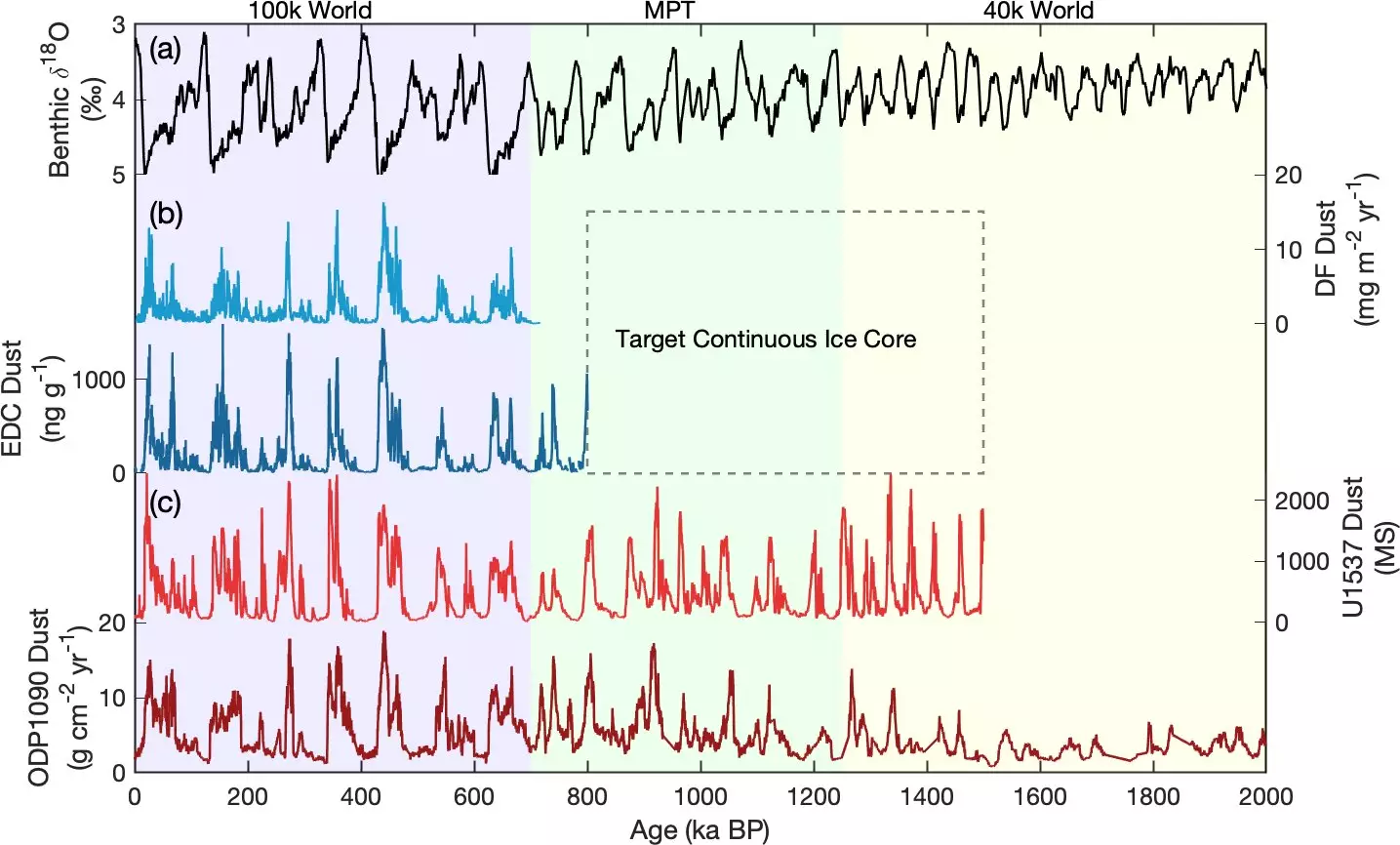Over the course of billions of years, Earth has undergone significant climatic transformations, marked by alternating periods of glaciation and warming. Among the most critical tools we possess for deciphering these complex climates are ice cores, which serve as geological archives embedding vital climate data within their frozen layers. By extracting and analyzing these ice cores, scientists can trace historical shifts in climate patterns and assess their implications for the planet’s future.
Ice cores, particularly those derived from regions like Antarctica, provide invaluable insights into climate changes through recorded geochemical constituents and particles that have been trapped and preserved over millennia. The presence of dust within these icy formations can be especially telling; higher concentrations often suggest glacial periods. This phenomenon occurs as lower rainfall, increased wind activity, and the exposure of continental shelves elevate the transport of dust, leaving a discernible imprint on the ice cores.
The extent of our historical climate understanding is currently grounded in the oldest known continuous ice record, which is derived from the European Project for Ice Coring in Antarctica, specifically at the Epica Dome C. This record stretches back an impressive 800,000 years. However, a collaborative international effort aims to extend this dataset to 1.5 million years—an endeavor that could enrich our comprehension of Earth’s climatic oscillations.
The cyclical nature of climate transitioning between glacial periods and interglacial warmth reveals fascinating patterns known as the Milankovitch cycles, which influence Earth’s climate through changes in its orbital characteristics. Prior to 1.2 million years ago, these cycles exhibited a periodicity of approximately 41,000 years, while records from 700,000 years ago onward have demonstrated a shift to cycles of around 100,000 years. Unpacking these transitions—especially the notable mid-Pleistocene transition—poses significant challenges since factors such as glacier movement and melting can distort stratigraphic records. This necessitates meticulous reconnaissance to select optimal sites for drilling.
Research efforts to locate potential sites for obtaining the Oldest Ice have recently identified the International Ocean Discovery Program Site U1537, situated near South America, as a promising candidate. A team led by Dr. Jessica Ng from the Scripps Institution of Oceanography utilized a comparative analysis of marine dust found in ice cores from the Southern Atlantic Ocean, specifically comparing records from Ocean Drilling Project Site 1090 and Site U1537.
The collaboration between these sites unveiled meaningful correlations in their dust content, thus linking sediment features from South America, Australia, and New Zealand. This analysis revealed Site U1537 as an apt candidate for correlating its marine dust profiles with those of the Epica Dome C ice cores in Antarctica. Furthermore, researchers developed synthetic Oldest Ice records to facilitate a detailed pattern matching process with the dust records found at Site U1537. Such methodological innovations pave the way for refined age determinations and better understanding of climate fluctuations.
Implications for Understanding Climate Dynamics
By examining the correspondence of ice dust with marine dust records up to 800,000 years ago, the research highlighted potential spatial variability of dust influx within the high-latitude Southern Hemisphere, especially during earlier glacial-interglacial transitions. Understanding the factors contributing to the mid-Pleistocene transition remains a key objective for climate scientists, as elucidating these connections could facilitate a greater grasp of Earth’s climatic causes and consequences.
Dr. Ng and her colleagues allude to past findings that suggest processes such as the erosion of regolith and tectonic activity leading to thicker ice sheets and subsequent glacial cooler temperatures possibly attributing to climate shifts. Yet, they emphasize that further investigation is essential for establishing definitive causal mechanisms driving these pivotal climate transitions.
A Broader Perspective on Earth’s Climate Cycles
The implications of this ongoing research extend beyond mere historical interest; understanding climate cycles of varying lengths—40,000 years and 100,000 years—calls into question the feedback mechanisms that govern Earth’s climate. These insights not only elucidate the past but also carry significant weight when forecasting future climate scenarios. By piecing together Earth’s climatic narrative through ice cores and multidisciplinary research, humanity stands to gain vital knowledge crucial for navigating impending environmental challenges.


Leave a Reply